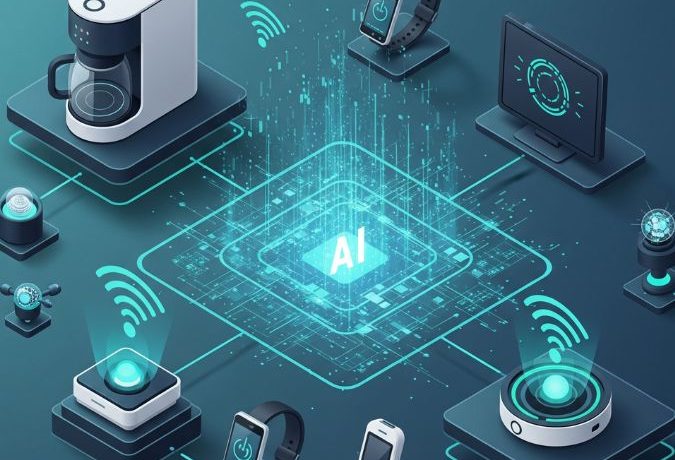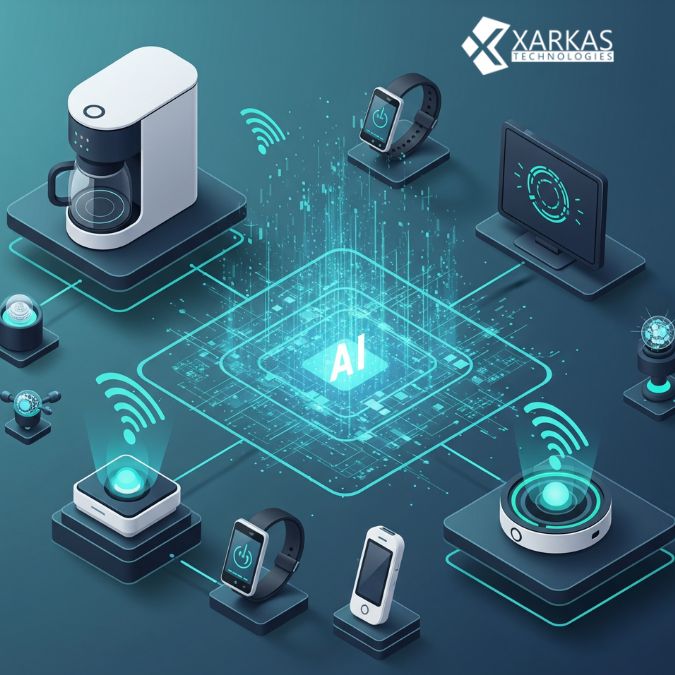
IoT Artificial Intelligence: The Ultimate Synergy
Revolutionizing Connectivity: How IoT and Artificial Intelligence Are Shaping the Future
The convergence of Internet of Things (IoT) and Artificial Intelligence (AI) is not just a buzz—it is the cornerstone of the next technological evolution. By integrating AI with IoT, organizations can transform data into powerful, actionable insights that lead to smarter decisions, faster responses, and more efficient systems.
Table Of Content
- Revolutionizing Connectivity: How IoT and Artificial Intelligence Are Shaping the Future
- What Is IoT Artificial Intelligence?
- Why the IoT and AI Combination Matters
- Key Benefits of Integrating AI in IoT
- 1. Intelligent Automation
- 2. Enhanced Data Analytics
- 3. Predictive Maintenance and Risk Management
- 4. Smarter Consumer Applications
- Use Cases of IoT Artificial Intelligence Across Industries
- Smart Manufacturing (Industry 4.0)
- Healthcare and Remote Patient Monitoring
- Smart Agriculture
- Smart Cities and Infrastructure
- Retail and Inventory Management
- Challenges in IoT and AI Integration
- Edge AI: The Future of Smart IoT
- IoT Artificial Intelligence and 5G Connectivity
- Security in AI-Powered IoT Networks
- Future Outlook: What’s Next for IoT and Artificial Intelligence?
- Conclusion: A Smarter, More Connected World
What Is IoT Artificial Intelligence?

IoT Artificial Intelligence refers to the integration of AI technologies like machine learning, deep learning, and natural language processing into IoT ecosystems. While IoT focuses on connecting devices and collecting data, AI processes that data and generates intelligent predictions or actions. Together, they create systems that are adaptive, autonomous, and intelligent.
Why the IoT and AI Combination Matters
The fusion of AI and IoT introduces a paradigm shift in industries by enabling:
-
Predictive maintenance
-
Real-time analytics
-
Autonomous decision-making
-
Personalized user experiences
-
Resource optimization
This integration is especially important in sectors like manufacturing, healthcare, agriculture, smart cities, energy management, and transportation, where data-driven insights significantly impact outcomes.
Key Benefits of Integrating AI in IoT
1. Intelligent Automation
With AI, IoT systems can automate complex tasks by learning from patterns and past behaviors. This allows for automated supply chain management, dynamic inventory adjustments, and adaptive energy usage, reducing human intervention and errors.
2. Enhanced Data Analytics
AI algorithms process massive volumes of real-time IoT data, identifying anomalies, trends, and opportunities that would otherwise go unnoticed. This leads to better forecasting, real-time monitoring, and strategic decision-making.
3. Predictive Maintenance and Risk Management
In industries such as manufacturing and aviation, AI-driven IoT systems forecast equipment failures before they occur. This reduces downtime, minimizes maintenance costs, and improves safety.
4. Smarter Consumer Applications
Smart homes and wearables are prime examples where AI empowers IoT devices to learn user preferences, optimize routines, and provide tailored experiences, making everyday life more efficient and enjoyable.
Use Cases of IoT Artificial Intelligence Across Industries
Smart Manufacturing (Industry 4.0)
-
Predictive quality assurance powered by real-time IoT sensors and AI analysis
-
AI-driven robotics for dynamic production line adjustment
-
Energy usage optimization using AI-powered demand forecasting
Healthcare and Remote Patient Monitoring
-
AI-powered IoT devices track vital signs and notify medical professionals in real-time
-
Machine learning algorithms detect anomalies and predict health deterioration
-
Wearables that adapt to user habits and provide feedback for healthier lifestyles
Smart Agriculture
-
IoT sensors monitor soil moisture, weather, and crop health
-
AI models determine optimal irrigation, fertilization, and harvesting times
-
Drone integration with AI to assess field health and automate seeding
Smart Cities and Infrastructure
-
Traffic optimization using AI to analyze data from IoT-connected signals and sensors
-
Air quality prediction through environmental IoT devices and AI modeling
-
AI-driven waste management systems that route collection based on real-time bin status
Retail and Inventory Management
-
Customer behavior analytics through IoT cameras and AI facial recognition
-
Real-time stock management with AI-driven supply chain predictions
-
Personalized shopping experiences with AI-powered recommendation engines
Challenges in IoT and AI Integration
Despite the transformative potential, there are challenges to consider:
-
Data privacy and security: IoT devices gather sensitive information. Ensuring end-to-end encryption, secure authentication, and AI model transparency is critical.
-
Interoperability issues: Multiple devices from different vendors must seamlessly communicate, demanding standardized protocols and APIs.
-
Scalability: AI algorithms must be able to scale efficiently with increasing IoT endpoints and data volume.
-
Power consumption: AI models on edge devices require energy-efficient algorithms and hardware optimization.
Edge AI: The Future of Smart IoT
Edge AI is a revolutionary concept where AI processing occurs directly on the IoT device or near the data source. This minimizes latency, reduces bandwidth use, and enhances privacy. Use cases include:
-
Smart surveillance cameras performing real-time facial recognition
-
Autonomous vehicles making split-second decisions based on onboard AI
-
Wearables processing biometric data without cloud reliance
By shifting intelligence to the edge, businesses can unlock real-time insights, lower operational costs, and achieve true autonomy in their IoT systems.
IoT Artificial Intelligence and 5G Connectivity
The rollout of 5G networks is a game-changer for AI-IoT systems. With ultra-fast speeds and ultra-low latency, 5G enables:
-
Instant data transmission between devices and servers
-
Massive IoT deployments with enhanced connectivity
-
Real-time decision-making powered by high-throughput AI algorithms
This infrastructure is vital for supporting autonomous vehicles, remote surgeries, and smart factories, all of which demand blazing fast, stable connections.
Security in AI-Powered IoT Networks
Ensuring security in AI-IoT systems is non-negotiable. Key strategies include:
-
AI-based intrusion detection systems that learn from network behavior
-
Blockchain integration for tamper-proof data exchange
-
Federated learning models to train AI without compromising user data privacy
Implementing zero-trust architecture, real-time threat monitoring, and secure firmware updates are fundamental in building trust and resilience into IoT ecosystems.
Future Outlook: What’s Next for IoT and Artificial Intelligence?
The future of AI and IoT is incredibly promising. By 2030, over 75 billion IoT devices will be connected, with AI embedded in nearly every aspect of these networks. Emerging trends include:
-
Self-healing networks where AI autonomously detects and fixes issues
-
Emotion-aware AI integrated into consumer devices
-
AI-driven swarm intelligence for drones, robots, and sensors to collaborate in real-time
-
Quantum AI accelerating data processing within IoT frameworks
The fusion of AI and IoT will soon enable hyperconnected environments that are not only intelligent but also context-aware and self-optimizing.
Conclusion: A Smarter, More Connected World
The integration of Artificial Intelligence and IoT is not a distant dream—it’s a rapidly unfolding reality transforming every sector. From enabling real-time decisions in manufacturing to personalized healthcare, the combined power of AI and IoT offers unparalleled efficiency, intelligence, and innovation.
To stay competitive, businesses must embrace this technological synergy, invest in scalable AI models, and secure IoT architectures. The future is not just smart—it’s intelligent, adaptive, and deeply connected.







No Comment! Be the first one.